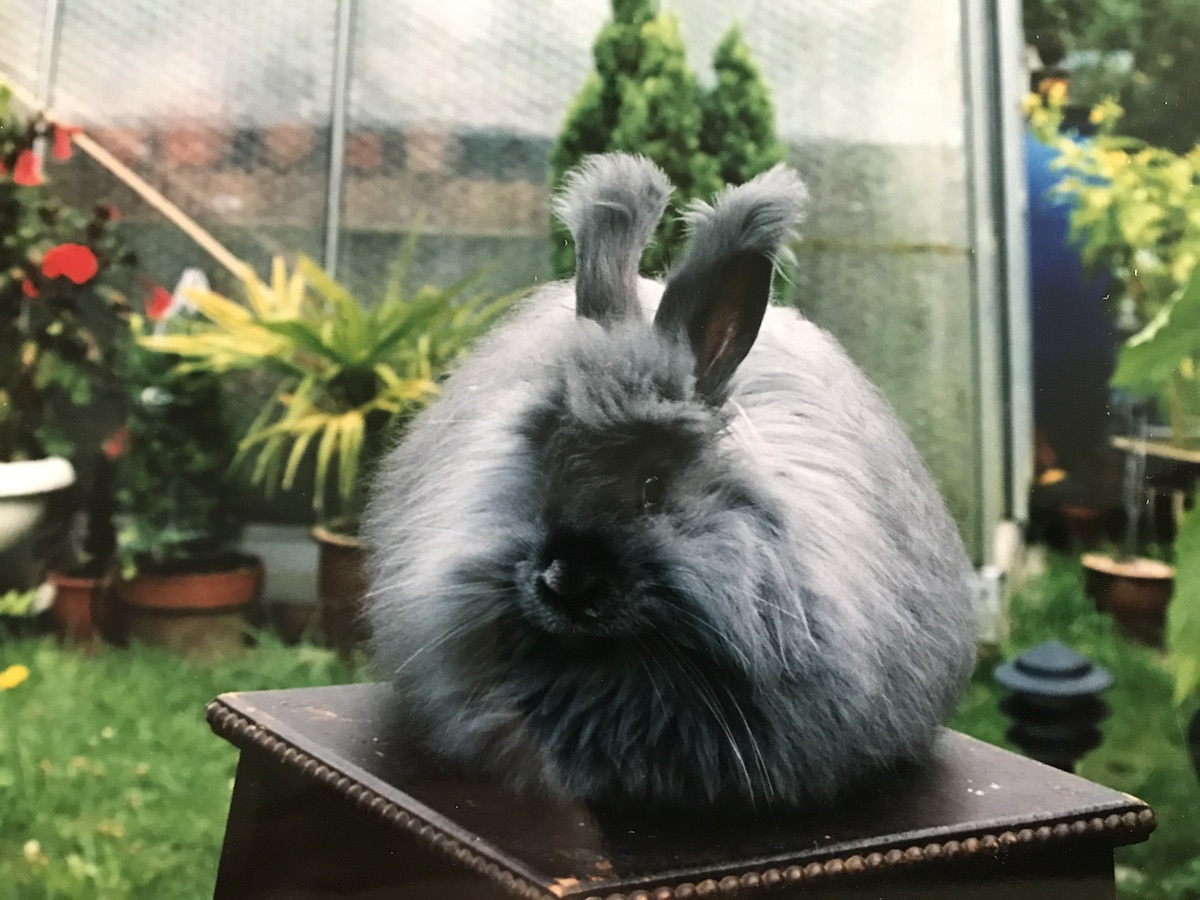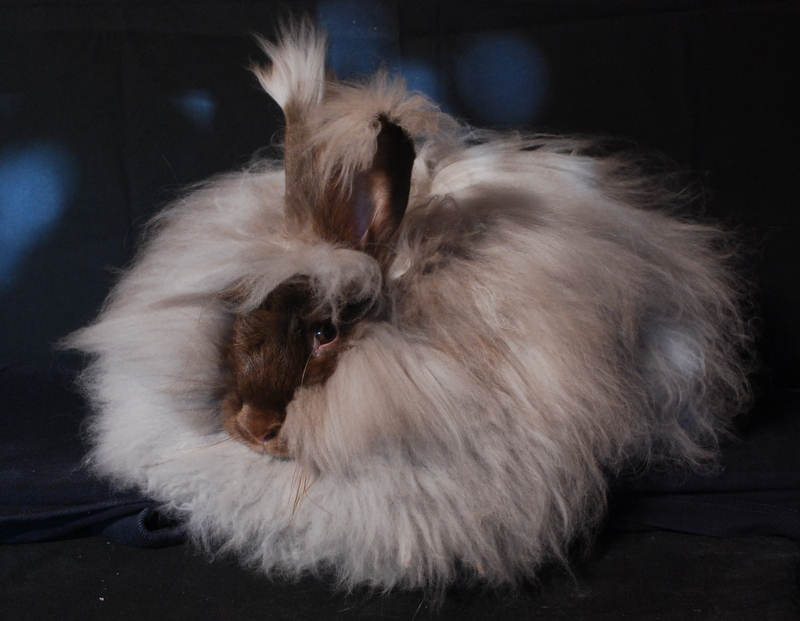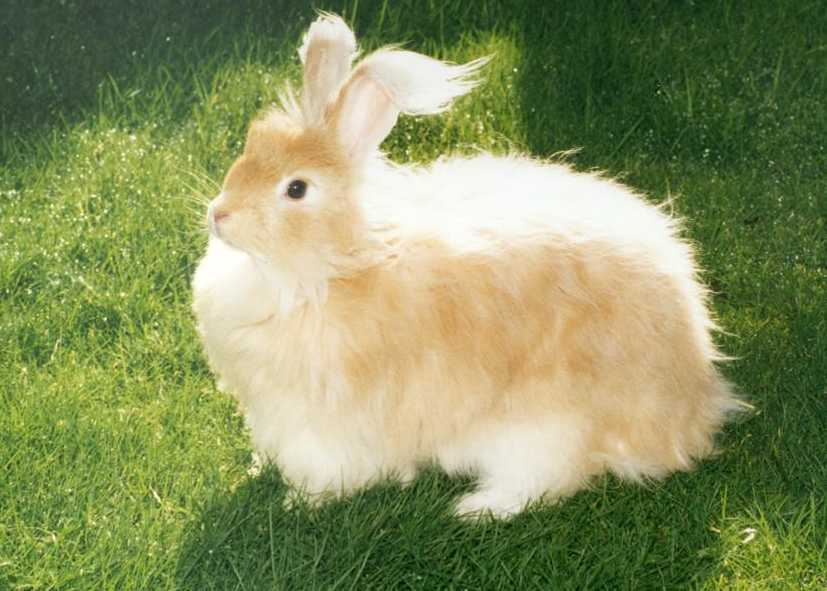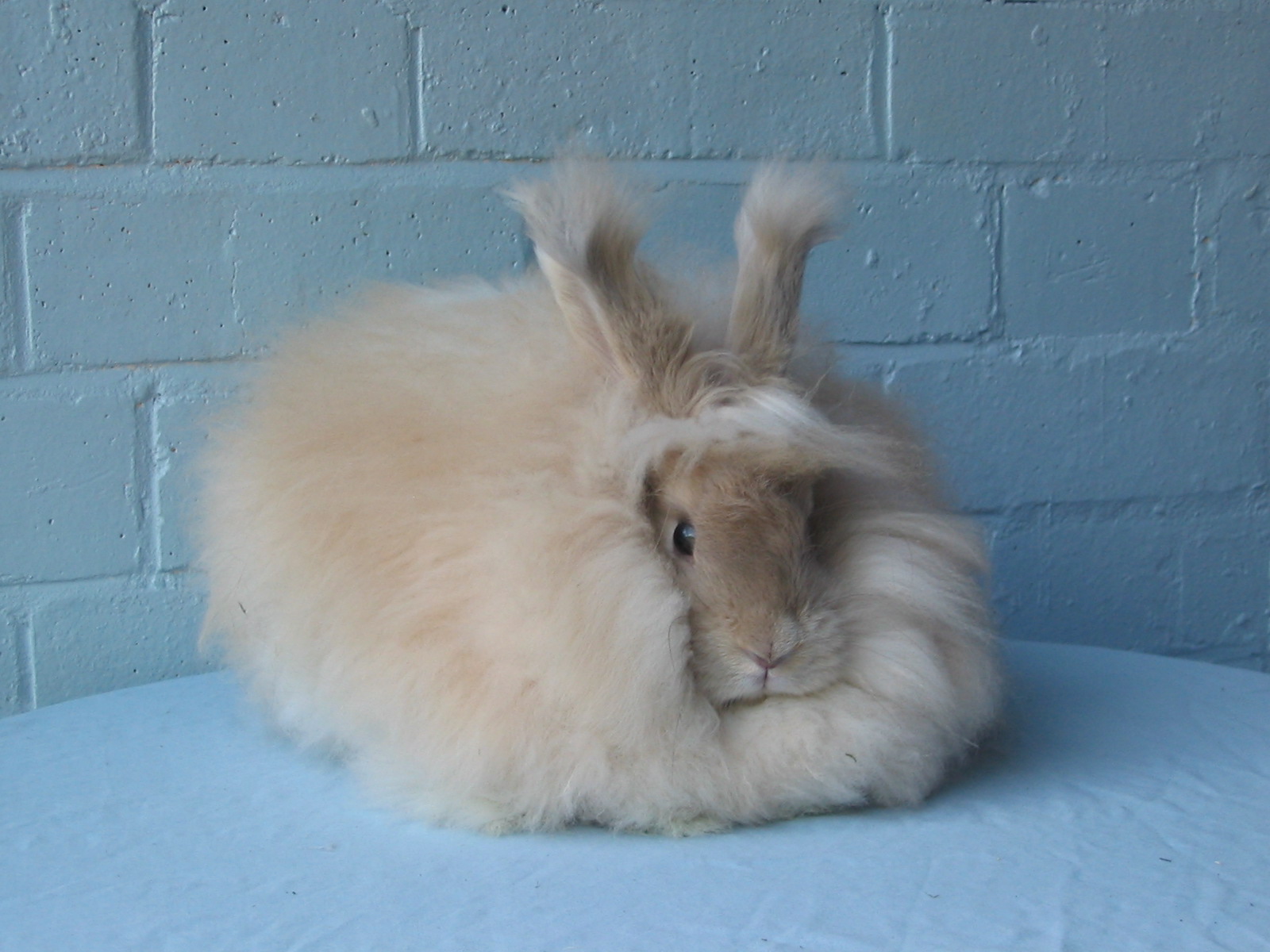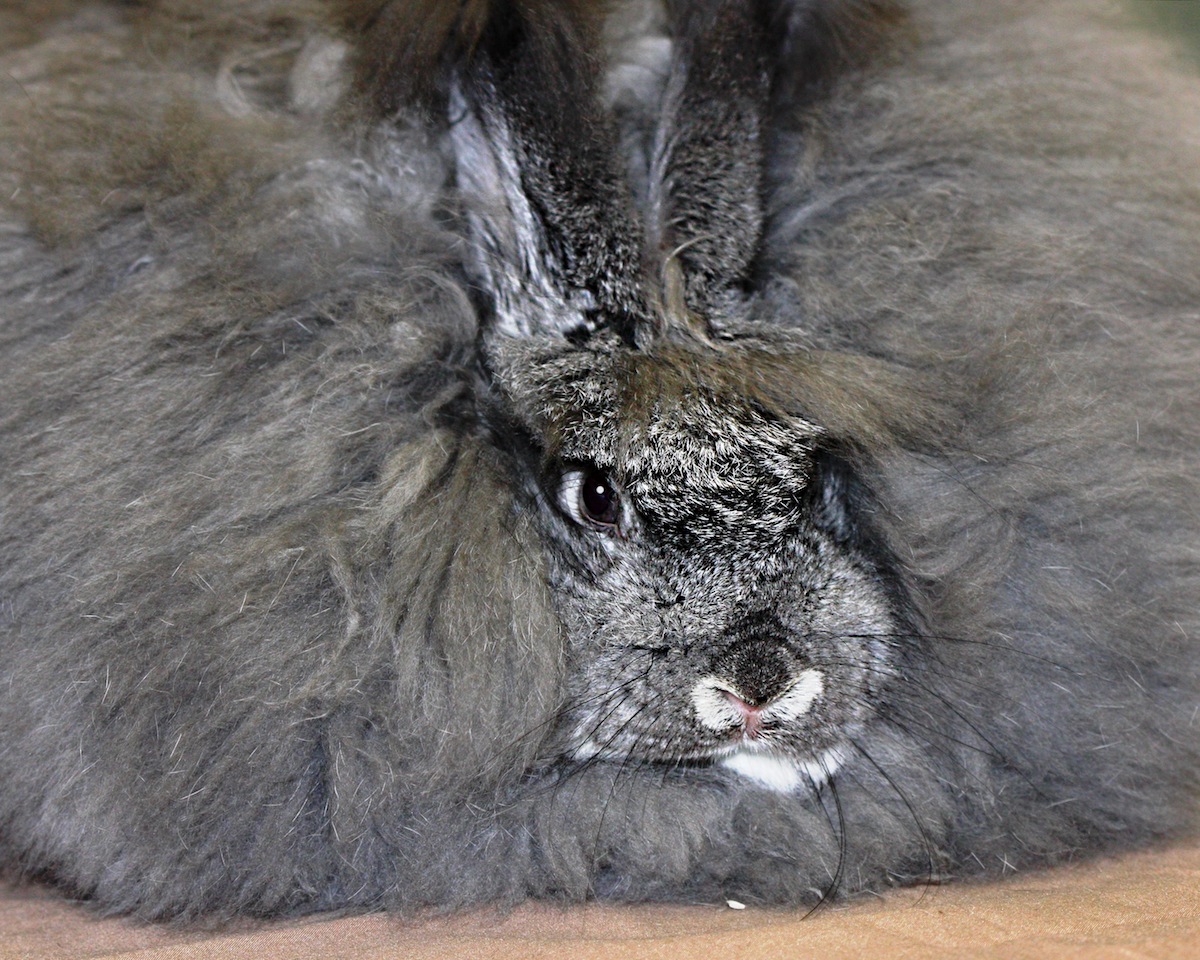
The breed standard of the national club for English Angora rabbits
Judges are requested to judge the coloured Angora to the Breed Standard as laid down by the Specialist Club and not to confuse the colours with any other breed standard for short haired varieties.
Points are the same for Whites except that 5 points each are deducted from Quantity and Quality of wool and allocated:
Solid Colour: 10 points
Angoras are unique in the fact that they possess a multi-layered coat. The tips of each new coat are therefore darker than the previous coat which lightens as it gains length.
This produces Banding in all colours. Rabbits should not be excessively penalised for lighter bands of the top colour appearing in the coat, but the more uniform the colour the better. White bands are unacceptable, with the exception of the Golden, which is of yellow origin and therefore has a creamy – white band at the base.
Colours
Smoke
- Head, feet and ears black. Wool dark bluish-grey without white base
- Tips to match head
- Nose and ears to be free of silvering
- Eyes blue but brown acceptable
Blue
- Head, feet and ears blue, as dark as possible
- Wool blue without white base
- Tips to match head
- Ears and nose to be free of silvering
- Eyes blue-grey
Chocolate
- Rich chocolate on head, ears, legs and tail
- Body lighter shade with tips to match head
- Under colour pale chocolate
- Eyes to glow ruby red in subdued light, but brown acceptable
Lilac
- Head, ears and feet dove grey with a very distinct warm tone
- Wool pale dove grey, the tips (guard hair) to match the head and ears
- Eyes blue or shades of brown, from dark to pale ochre, often with a warm glow
- Under colour to match top colour
- Nails horn coloured in keeping with the dilute nature
Golden
- Head, feet and tips a rich, clean orange gold
- Wool lighter, with colour carried down as far as possible, shading to a creamy white base
- Belly creamy white, eyes brown
- Chocolate mask and feet, wool as for Golden, but with Chocolate shadings on lower flanks and ears
- Belly creamy white, eyes brown
Tortoiseshell (Sooty Fawn)
- Black mask and feet, wool as for Golden, but with Black and Sooty shadings on lower flanks and ears
- Belly creamy white, eyes brown
Cream
- Head and feet cream, wool lighter cream with tips to match head
- Creamy white belly, eyes blue-grey preferred but brown acceptable
Blue-Cream
- Mask and feet blue
- Wool as for cream but with blue shading on ears and flanks with the colour extended across the belly
- A blue tinge to the wool and blue tipping is desirable but NOT essential
- Eyes blue-grey
Sable Light Shade
- A medium sepia colour similar to fur breed
- Ears, face and tail a deep sepia
- Body wool shaded from a medium sepia on back to lighter on chest and flanks
- Under-colour fawn
Siamese Sable Medium Shade
As for light sable except for dark sepia colour instead of medium
Siamese Sable Dark Shade
- Very dark plum brown, can be almost black on mask, in place of sepia
- Often mistaken for a smoke, but coat colour of dark sable has distinct rusty tones in the wool
- Eyes for all shades to glow ruby red in subdued light
Marten Sable – light shade
- A medium sepia colour similar to fur breed
- Ears, face and tail a deep sepia
- Body wool shaded from a medium sepia to lighter on chest and flanks
- Undercolour fawn
- The chest,flanks, rump and feet to be well ticked with white hair, any extension of white ticking over sides and rump to be added beauty and not a fault (it will be difficult to find the ticking in the longer parts of the coat, so it will not be considered a fault if not seen)
- Light nape of neck to be confined to the triangle behind the ears, and this should be as small as possible
- Eye circles, inside of ears, line of jaw, inside of nostrils, inside feet and legs, belly and underside of tail to be white
- White belly can have sepia under colour
Marten Sable – medium shade
- As for light shade except that medium sepia colour to read rich dark red
Marten Sable – Dark Shade
- As for light shade except that medium sepia colour to read very rich dark plum brown
- Darker, almost black colours on face, ears and tail
- Coat colour has distinct rusty tones in the wool
- Eyes for all shades to be brown and to glow red in subdued light
Agouti colours
Brown-Grey
- Head, ears and feet wild grey, a mixture of black and gold
- Wool blue, as dark as possible with tips to match head
- Eyes brown
- White belly with blue under-colour
Blue-Grey
- Head, ears and feet a mixture of blue and cream
- Wool blue with tips to match the head
- White belly with blue under-colour
- Eyes blue-grey
Chinchilla
- Head, ears and feet similar to fur breed, a mixture of black and silver
- Wool bluish with tips to match the head, definition of pearling etc. of fur breed not essential
- White belly with blue under-colour
- Eyes blue, brown or brown-grey
Cinnamon
- Head, ears and feet a mixture of chocolate and cinnamon
- Wool paler cinnamon with tips to match head with depth of colour and banding essential
- White belly with or without pale cinnamon under-colour
- Eyes brown or glowing ruby red in subdued light
Faults
- Silvered ears and noses in smokes and blues
- Putty noses
Serious Faults
- White toenails
- White patches on any part of the body
White flashes on undertail in Agouti colours is not a fault
NB: Updated 2021 as Sooty Fawn now split into two colours

